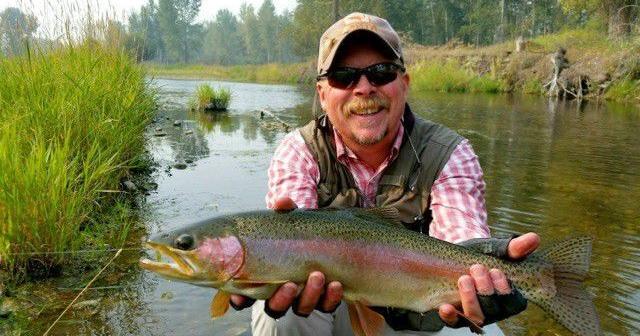“In our family, there was no clear line between religion and fly fishing.” This is the opening line of Norman Maclean’s novella “A River Runs Through It.” If you are an avid fly fisherman like myself and so many others, no truer words have ever been spoken.
Fly fishing for many is a passion, obsession, and way of life. For some, like myself fly fishing even provides a livelihood. I started traveling to Montana to fish as a kid in the 1970’s and moved to the Bitterroot in 1999 to start my outfitter/guide business. I chose the Bitterroot for its scenic beauty, endless outdoor recreation opportunities, and of course the productive trout fishery the river supports. I’ve had success over the years through hard work, but also because of the beauty and bounty of the Bitterroot. Many others have moved to the Bitterroot over the years for those very reasons. While we all love the Bitterroot lifestyle our growing population and development it brings threatens the very qualities that make this such a great place to live.
People are also reading…
In 2006 voters passed the Open Lands Program to preserve the very things we love about the Bitterroot. Since its inception the program has helped 38 local families conserve over 10,000 acres of prime agricultural land and wildlife habitat. What many folks may not realize is that in the same time the Open Lands Program has protected 40 miles of the Bitterroot river and tributary streams. Not only does this preserve prime riparian habitat but in some cases access to it. Skalkaho Bend Park and C Ben White access are two such places. The purchase of C Ben White Memorial Access formerly known as High Bank includes 100 acres of riparian land along the West Fork to wade fish or launch a boat. Along with that it has opened up access to thousands of acres of National Forest. Without the Open Lands Program this site and access most likely would have been lost forever.
Unlike most states, Montana does not stock trout in its rivers and streams. Our trout populations are wild and solely dependent on natural reproduction. We cannot have healthy populations of fish and game without the habitat they need to thrive. Fly fishing also brings huge economic benefits to our local communities. Montana is well known as a mecca for trout fishing. Anglers travel thousands of miles to fish the waters of Montana and the Bitterroot is at the top of many lists.
Montana Fish Wildlife and Parks (fwp.mt.gov) economists track spending trends of anglers and hunters. FWP estimates resident anglers spend $90 per angler day while non-residents spend $703 per angler day. An angler day represents one person spending any amount of time fishing in a day. FWP also conducts angling pressure surveys and estimates there were 101,786 resident angler days and 56,079 non-resident angler days on the Bitterroot and West Fork in 2020. If you multiply those angling days by average daily expenditures, that equates to $49.2 million dollars being pumped into our local economy by anglers annually.
This money reaches far beyond local guides and fly shops. Much of this money is spent on our many local small businesses. The Institute for Tourism and Recreation Research (itrr.umt.edu) tracks spending trends of all non-residents traveling to Montana. The institute estimates non-residents spent $5.15 billion in Montana in 2021. They also track what theses visitors spend their money on. The top 5 categories include fuel 23%, restaurant/bar 20%, lodging 18%, outfitter/guide 10%, and groceries 9%. The money generates even more economic activity as these business and their employees spend that money back into the local economy.
Even if you are not an avid angler, we all benefit directly and indirectly from preserving our river and natural resources. What is the value of catching a wild trout as the sun sets over the Bitterroot mountains. I guess you could put a number on it but for me it’s priceless.
Please vote yes for the Ravalli County Open Land Bond to preserve the qualities that make the Bitterroot Valley a wonderful place to live and work.
Credit: Source link





















![Much more than a fishing club, Donegal Trout Unlimited wins best chapter award [outdoors] | Outdoors](https://xpertflyfisher.com/wp-content/uploads/2022/01/61eafc4edb05d.image_.jpgcrop640336084resize640336ordercropresize-100x70.jpeg)









